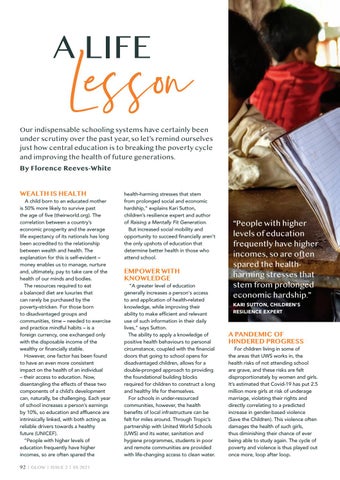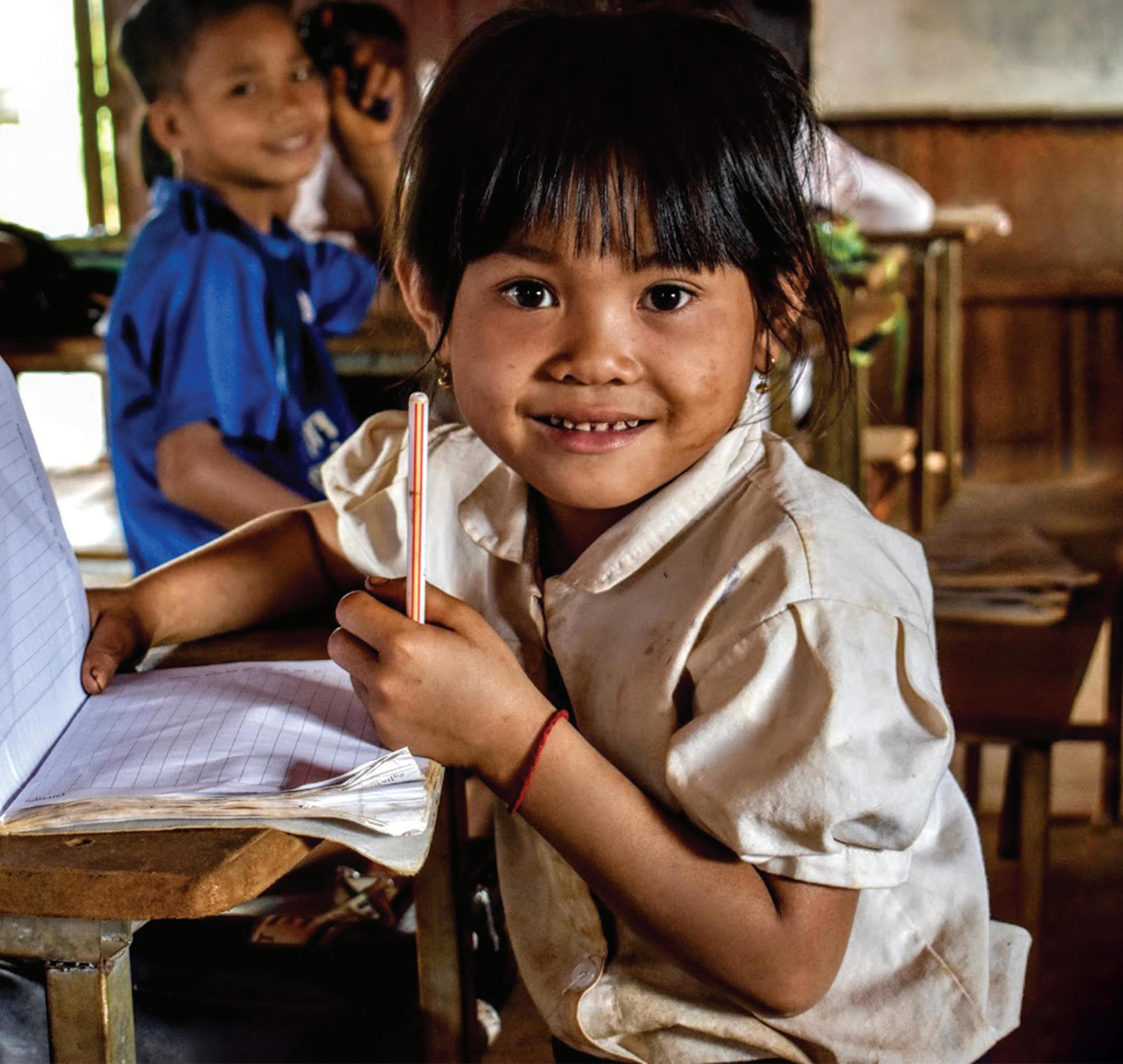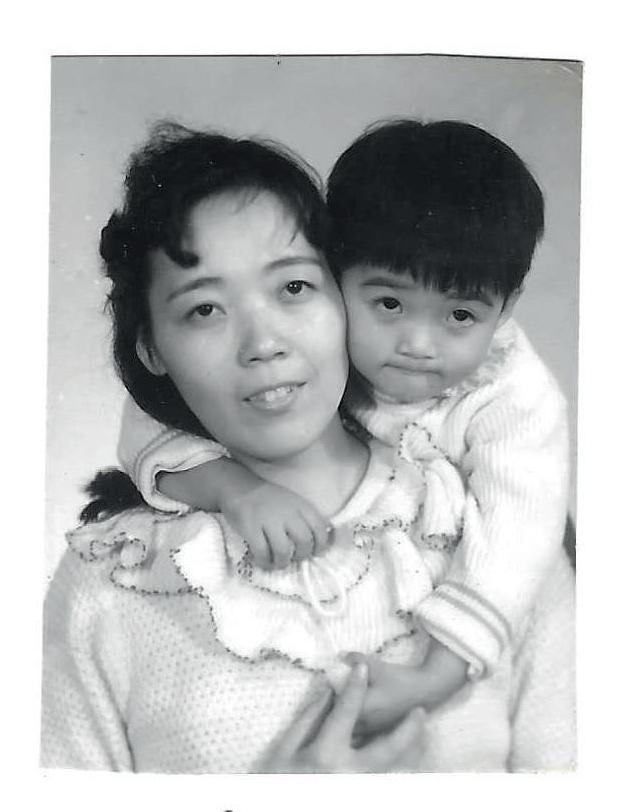A LIFE
Lesson
Our indispensable schooling systems have certainly been under scrutiny over the past year, so let’s remind ourselves just how central education is to breaking the poverty cycle and improving the health of future generations. By Florence Reeves-White
WEALTH IS HEALTH
A child born to an educated mother is 50% more likely to survive past the age of five (theirworld.org). The correlation between a country’s economic prosperity and the average life expectancy of its nationals has long been accredited to the relationship between wealth and health. The explanation for this is self-evident – money enables us to manage, nurture and, ultimately, pay to take care of the health of our minds and bodies. The resources required to eat a balanced diet are luxuries that can rarely be purchased by the poverty-stricken. For those born to disadvantaged groups and communities, time – needed to exercise and practice mindful habits – is a foreign currency, one exchanged only with the disposable income of the wealthy or financially stable. However, one factor has been found to have an even more consistent impact on the health of an individual – their access to education. Now, disentangling the effects of these two components of a child’s development can, naturally, be challenging. Each year of school increases a person’s earnings by 10%, so education and affluence are intrinsically linked, with both acting as reliable drivers towards a healthy future (UNICEF). “People with higher levels of education frequently have higher incomes, so are often spared the 92 | GLOW | ISSUE 2 | SS 2021
health-harming stresses that stem from prolonged social and economic hardship,” explains Kari Sutton, children’s resilience expert and author of Raising a Mentally Fit Generation. But increased social mobility and opportunity to succeed financially aren't the only upshots of education that determine better health in those who attend school.
EMPOWER WITH KNOWLEDGE
“A greater level of education generally increases a person's access to and application of health-related knowledge, while improving their ability to make efficient and relevant use of such information in their daily lives,” says Sutton. The ability to apply a knowledge of positive health behaviours to personal circumstance, coupled with the financial doors that going to school opens for disadvantaged children, allows for a double-pronged approach to providing the foundational building blocks required for children to construct a long and healthy life for themselves. For schools in under-resourced communities, however, the health benefits of local infrastructure can be felt for miles around. Through Tropic’s partnership with United World Schools (UWS) and its water, sanitation and hygiene programmes, students in poor and remote communities are provided with life-changing access to clean water.
“People with higher levels of education frequently have higher incomes, so are often spared the healthharming stresses that stem from prolonged economic hardship.” KARI SUTTON, CHILDREN’S RESILIENCE EXPERT
A PANDEMIC OF HINDERED PROGRESS
For children living in some of the areas that UWS works in, the health risks of not attending school are grave, and these risks are felt disproportionately by women and girls. It’s estimated that Covid-19 has put 2.5 million more girls at risk of underage marriage, violating their rights and directly correlating to a predicted increase in gender-based violence (Save the Children). This violence often damages the health of such girls, thus diminishing their chance of ever being able to study again. The cycle of poverty and violence is thus played out once more, loop after loop.














